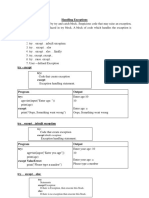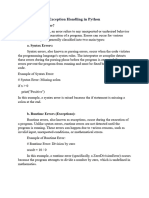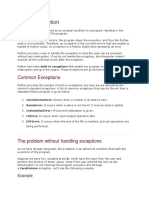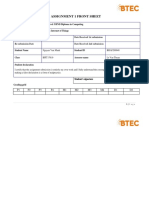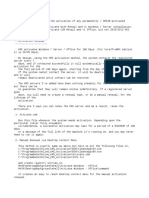0% found this document useful (0 votes)
33 views8 pagesException Handling
The document provides an overview of exception handling in Python, explaining what exceptions are, their types, and the importance of handling them to improve software reliability. It details Python's syntax for exception handling using try, except, else, and finally blocks, along with best practices and examples for various scenarios, including file operations and custom exceptions. Additionally, it includes tasks for practicing exception handling, such as validating user input for age and handling division by zero.
Uploaded by
ha3021413Copyright
© © All Rights Reserved
We take content rights seriously. If you suspect this is your content, claim it here.
Available Formats
Download as DOCX, PDF, TXT or read online on Scribd
0% found this document useful (0 votes)
33 views8 pagesException Handling
The document provides an overview of exception handling in Python, explaining what exceptions are, their types, and the importance of handling them to improve software reliability. It details Python's syntax for exception handling using try, except, else, and finally blocks, along with best practices and examples for various scenarios, including file operations and custom exceptions. Additionally, it includes tasks for practicing exception handling, such as validating user input for age and handling division by zero.
Uploaded by
ha3021413Copyright
© © All Rights Reserved
We take content rights seriously. If you suspect this is your content, claim it here.
Available Formats
Download as DOCX, PDF, TXT or read online on Scribd
/ 8


